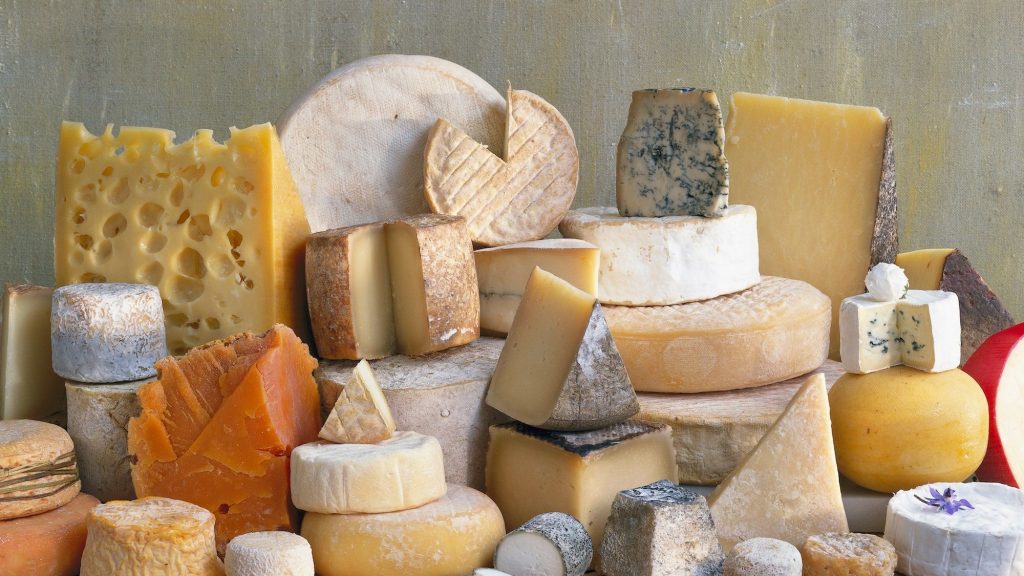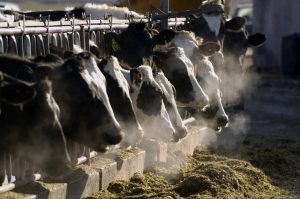Edward Keventer revolutionised the dairy industry in India. A pioneer in the field of agriculture and animal husbandry, especially scientific cattle breeding, nutrition, and pasteurised dairy milk, he single-handedly built the ice-cream and milkshake industry in India.
Keventer was recruited by the British Government to modernise the dairy industry in India in 1889. It was his task, as the expert, to initiate the processes – known in official correspondences as “experiments”. One such experiment was to make cheese in Poona. Known as the “Poona experiment”, it served as a template to make cheese locally and commercially available in India.
In 1890, the Director of Agriculture, Dr Ozanne requested Keventer to give “instructions in dairy management” to students in the Bombay Presidency. Keventer readily agreed and started his classes at Tamarind Lane, Fort, Bombay, and later at the Dairy Farm in Kirkee. During one such class, Ozanne was asked by a student why cheese was not made locally and had to be imported. Ozanne asked Keventer to take up the challenge and make “good quality” cheese in Poona.
The “Poona experiment” started in 1890 and continued for almost a year. Keventer initially wanted to try making the Stilton cheese, but then opted for Cheddar instead.
The principle of cheese-making depends upon the casein of milk being artificially curdled by means of rennet. A small quantity will curdle a considerable quantity of milk. The casein entangles the butter fat globules and this sinks, separating from the whey. The whey contains sugar, albumen, and a small proportion of butter fat. The curd is manipulated in various ways to produce different kinds of cheese. The Cheddar system of cheese-making is perhaps the most common. Cheese varies in quality according to the quality of the milk from which it is made. It varies in character according to the system adopted in making it. The finest soft cheeses are made from milk, which has been improved by the addition of cream. Cheese made from pure milk is called whole milk cheese. There are numerous gradations of quality between cheese of this class, and that made from skimmed or separated milk.
Keventer knew that the best cheeses were made from whole milk. The milk required for making cheese had to be fairly fresh and free from abnormal odours and as clean as possible. Poona mostly relied on Sangli for the supply of fresh milk. But Keventer wanted the milk delivered to the farm within a couple of hours after milking into absolutely clean utensils. Hence buffaloes were brought to the Kirkee farm.
Keventer needed special vats to curdle milk, curd coolers on which curd was exposed and ripened after it was removed from the vat; the curd mill which ground the curd into granules before salting; hoops or moulds in which curd was squeezed free of whey; the cheese press, to press the curd in the hoops. He employed local carpenters and ironsmiths to make the equipment as per his specifications.
Keventer knew that he could not use animal rennet if the cheese had to be marketed to Indian customers as well. He used an extract from the berries of Withania coauglans (locally known as Paneerphool) and found that they could not only coagulate milk but also digest and mellow curd into cheese. The use of the Withania rennet removed the cause of the “Hindu objection” to cheese.
But it had some disadvantages. The curd from Withania rennet never developed the same desirable texture that the curd from animal rennet did; moreover, the smell of Withania was more powerful than the characteristic odour developed in the curd by a sufficient degree of acidity. Therefore, an expert cheese-maker could not detect by his sense of smell when the curd became sufficiently acidic.
The blue-white colour of cheese made from buffalo milk was not attractive and reduced the market value of cheese. This of course could be rectified by artificial colouring, which was more or less practiced in all systems of cheese-making. The unusually higher percentage of butter fat in buffalo milk gave a peculiar consistency to the ripened cheese. The curd remained somewhat granular during the ripening process and a clean slice could not be cut with a sharp knife.
But the cheese manufactured at Poona varied from fair to good, none could be classed as inferior. The “Poona experiment” proved that in India milk could be coagulated and the quality of curd developed had the flavour and texture which ought to make a “high class” cheese, but the maturing of the cheese afterwards could not be regulated to give the best results. Cheese-making could only be economically practiced in those districts of India, where the day temperature for a considerable portion of the year was moderately cool and where fresh milk could be procured at a cheap rate.
Keventer’s success with making cheese at Poona spread like wildfire in India in the early 1890s. The Government of Madras, with a view to carrying out the “Poona experiment” in that Presidency, addressed the Government of India in December 1894 for the purpose of securing the services of Keventer. It was found, however, that his services had been secured by the Government of the North-West Provinces and Oudh. The Government of Madras then requested Keventer to lend them a “competent man” trained by him. A year later, Mr Schulz, an assistant of Keventer, went to Madras where he tried to repeat the “Poona experiment” of making Cheddar cheese. Whether he was successful or not is not known.
After Keventer left Poona for Aligarh in 1891, he started making cheese at the farm there. Anyone willing to learn cheese-making could do so at his farm. A fee of ₹10 was charged. Later, when Keventer opened a branch at Darjeeling, he started a course in cheese-making there too. He would shuttle between Aligarh and Darjeeling, and train students.
Keventer’s expertise was put to use again in 1917 when the agricultural department tried to make cheese in Poona and Ahmedabad. With a better supply of milk and control of temperatures, a better quality of the cheese was achieved at both the farms. It is not known why the enterprise was not continued in Poona, but Ahmedabad did become a hub for cheese-making.
In 1927, The Royal Commission on Agriculture was constituted to find ways to better the output of milk and milk products in India. Keventer was the last witness to appear before the Commission. He stated that India required cheaper and reliable milk and ghee so that they might reach the poorer classes. He recommended the breeding of cattle by the establishment of pedigree herds of India’s best breeds of cows, buffaloes, and goats, and as to make the supply of milk and ghee more reliable, food laws should be enacted to protect not only the public but also the honest dairyman. He laid much stress on teaching modern methods of handling milk, manufacturing of butter, casing the milk and sugar and cheese.Keventer’s dedication towards his art and craft was exemplary. He might be better known for the Cassata ice cream he made at his dairies or his milkshakes, but his tireless efforts benefitted millions of farmers and dairymen in India.

















